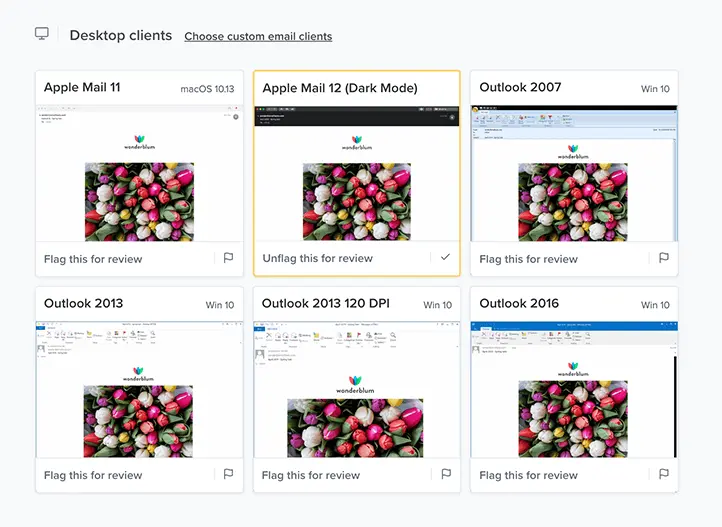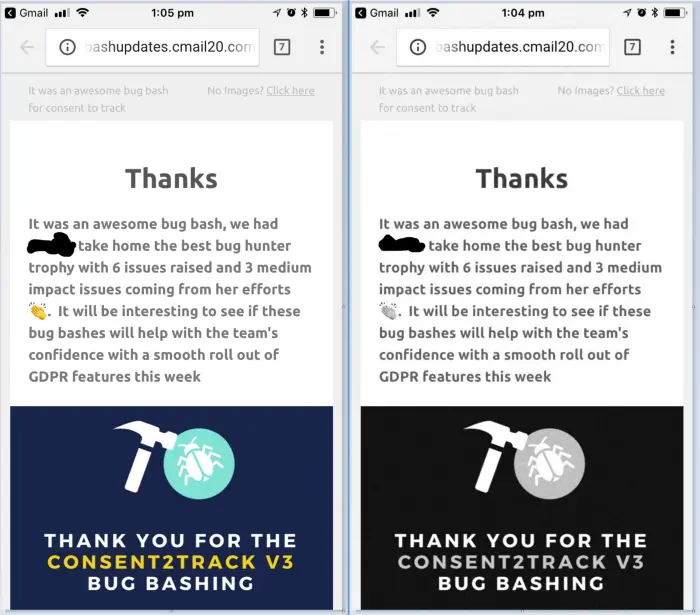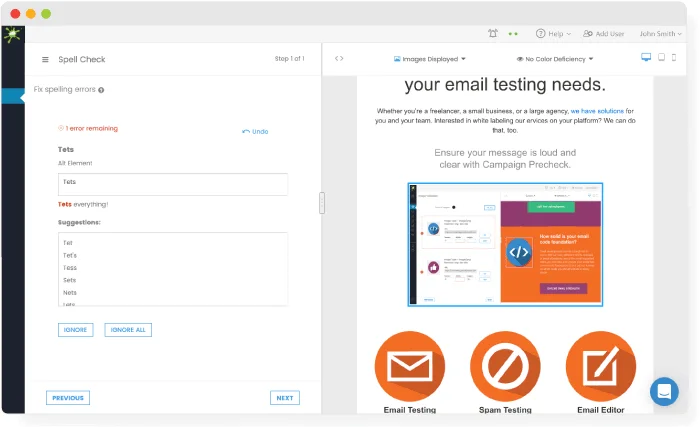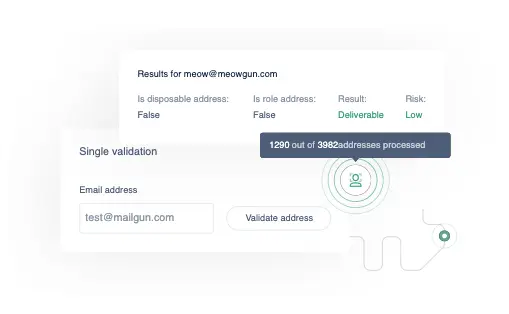- All Posts
- /
- Email testing: What you need to know to get started

Email testing: What you need to know to get started
Data Management-
 Stephanie Knapp
Stephanie Knapp
-
Updated:Posted:
On this page
You spend days, weeks, or even months planning a campaign. You go back and forth with your team over multiple rounds of edits, and you think you’ve really nailed it this time.
And then…crickets. Or even worse, complaints roll in.
What went wrong? If you don’t test your emails, you’ll never know. Email errors or campaign failures are an email marketer’s worst nightmare, but they are avoidable. Think of email testing as insurance for all the hard work you put in leading up to, and following the moment you hit “send.”
Why email testing matters
You know it’s always good practice to double check your work, but where does email testing fall on your list of priorities and processes? 43% of email marketers don’t test every email they send out, which is a risky move. If you’re part of that portion of email teams who don’t regularly check their emails, we’re here to teach you how.
Email testing has two main benefits—catching errors before it’s too late and providing insights for future marketing campaigns.
Email testing prevents errors
Email marketing is an ever-changing environment with a lot of variables. The most popular email clients update equivalent to every two days. Each time an email client updates, there’s a possibility that your email will render incorrectly (if it even makes it to the inbox at all).
Even seemingly small errors can impact your ROI, too. A broken link could mess up your campaign results, and 51% of subscribers say they’ve unsubscribed from an email because it didn’t display or work well.
Email testing provides insights
The benefits of email testing and analysis go beyond rendering, though. A/B tests, such as email subject line testing, provide insights into what performs best with your audience. By setting up A/B tests or analyzing which emails had the most engagement, you can take what you’ve learned to create more impactful emails in the future.
Email testing tools and types
Email marketers may be working with limited budgets and tight schedules, so when you need to get the most work done in the least amount of time, email testing tools are your friends.
Pre-send testing for rendering and experience testing
If you want your emails to show up beautifully for all subscribers, you need to do pre-send testing to check your rendering and customer experience.
Rendering testing
Email rendering is all about how an email looks and performs for your subscribers. A broken link here and there won’t destroy your email marketing program, but a consistent lousy experience could annoy users to the point of unsubscribing.
Litmus
Litmus is a paid tool starting at $99 a month that offers a variety of testing tools, one of which is rendering. Litmus Live Previews allow you to see how your email will appear across devices and email clients as you build. Previews allow you to check renderings automatically and hone in on any rendering problems quickly.
Email on Acid
Email on Acid also has rendering tools across 90+ email clients and devices. Their live previews allow you to see and share renderings on your code so that you can catch errors before hitting send. Email on Acid is a paid email testing tool, with pricing starting at $73 a month.
Link testing
While each email you send will have a unique objective or position in the marketing funnel, they’ll probably all have links. Working links are critical for getting customers to the page they’re interested in, as well as for helping you track performance.
You also need to make sure that the included links point to the correct page, as if you duplicate an existing email to create a new campaign, it’s easy to forget to update links to the correct URLs.
Litmus
If you need help organizing everything you need to check before sending an email, then Litmus Checklist can help. Their pre-send checklist enables you to monitor critical elements in the email development stage, such as links and image blocking.
Accessibility testing
Every one of your customers deserves to have the same great email experience, and accessibility testing ensures that happens.
Litmus
Another feature within Litmus’ pre-send Checklist is an accessibility checker. When you run an email through the tool, accessibility issues will automatically be flagged for you to address. Some of the checkpoints include ALT tags, content hierarchy, screen reader or assistive device compatibility.
Manually testing
If you’re working on a budget or need to start accessibility testing before you can choose a more extensive third-party tool, there are free ways to test email accessibility. It will take a more substantial time commitment, and manual testing always increases the chances of you missing something, but it’s better than not testing at all.
Tasks such as using VoiceOver on iPhone to read your test email, viewing the email with images turned off, or applying color blindness filters are all useful.
Content and preheader
In addition to some of the finer details or harder-to-test elements of email, you’ll also want to check content, subject lines, and preheader text. Most email testing software covers these points, or you can manually review before sending.
Email on Acid
Email on Acid’s campaign precheck lets you customize your email testing workflow to review elements such as content and preheader text. The tool also has a spell check to avoid embarrassing typos, and a scan for potentially offensive words.
Manual testing
If you want to review emails manually, make sure you have a spot in your workflow for your copy. Free email testing tools like Testsubject let you see what your subject line and preheader will look like on different devices, and you can use the free version of Grammarly to catch spelling errors.
Delivery rate and deliverability testing
After an email leaves your email service provider, there are two “gates” it has to pass before being seen by customers. First, the email needs to be accepted by the recipient’s server. The percentage of times this happens is your delivery rate.
Then, the email needs to make it into your subscribers’ inbox and not their spam folder. The percentage of your emails that make it to the inbox is your deliverability rate.
Testing to make sure that spam filters or invalid email addresses aren’t blocking your emails is critical.
Email Validation
Sending an email to an invalid email address uses up your precious resources unnecessarily. A single bad email address here and there won’t have long-term effects. However, if you pay for email services based on your list size, you want to make sure your numbers are accurate.
Mailgun
Mailgun is another option if you want to check the validity of your email list. The service checks that the email addresses on your list exist across major email clients, which improves your delivery rates. Mailgun is a paid tool, and you can access email list verification starting at $35 a month.
Kickbox.io
Kickbox.io is a paid tool that verifies your email list. The tool checks the email addresses on your list to eliminate bounces and improve campaign placement. While the service isn’t free, it’s an investment worth considering. Verification costs depend on your list size, starting at just $5 for 500 verifications.
You also don’t need to verify your list every time you send an email. Choose a frequency that aligns with how quickly your list grows and pay as you go.
Email configuration
Another element affecting your delivery and deliverability rates is your mail server. Email configuration testing verifies your server and measures response time. This is another test you can manually run, but probably don’t need to do every day.
Mail-Tester
Mail-Tester is a free email configuration testing tool that promises to “test the spammyness of your emails.” All you have to do is send a test email to the randomized email address they provide, and you’ll receive an email score. In addition to a “spammyness” score, the tool calls attention to details you need to address, such as elements that could lead to spam filtering or blacklists.
MX Toolbox
Another free tool to test your server authentication is MX Toolbox. You’ll need to know your email server address to get started, which you can find with the MX Lookup tool. Tests included in authentication include SMTP transaction time, SMTP hostname validation, and an SMTP banner check.
Deliverability testing
A failed delivery is a “bounce,” which most email service providers can track. Tracking your deliverability rates usually requires a third-party tool, though, since most email service providers don’t provide these metrics.
Everest
This year, leading deliverability testing tools 250ok and ReturnPath combined to create a new tool called Everest. With Everest you can conduct pre-send optimization, check live email performance, and review post-send analytics. Deliverability monitoring includes reputation scores, IP warnings, spam complaints, and overall sender scores.
Spam Scores
Spam filters are the bane of email marketers. While your delivery scores may seem healthy, spam folders may secretly be ruining deliverability. Spam testing tools check your placements across email clients, check if you’re blacklisted, and gather your score from different spam filtering companies.
Litmus
Litmus offers spam testing to its customers and can integrate directly with your email service provider. The Litmus test checks your emails across different spam filters, and ranks each factor as passed, minor, or critical. If Litmus does identify an issue, you’ll know which issues are most critical. Other popular spam filter testing tools include Email on Acid, Return Path, and Spam Assassin.
Is Not Spam
There are some free spam testing tools for one-off checks. Is Not Spam allows you to send an email to a test address to receive a spam score. The tests they perform include: SPF check, Sender-ID check, DomainKeys check, DKIM check, and SpamAssassin Check.

Email subject line and performance testing
Email testing isn’t all about the technical—you use email testing to learn about your audience, too! While you can use some basic email metrics available in your email service provider, tools like Vero can provide greater insights to subscriber engagement. We even have a guide to A/B testing here. Here are some of the tests you can monitor with Vero.
Subject line styles and personalization
There are opportunities abound to test within email subject lines. Check to see if your audience reacts better to title case or sentence case, long subject lines versus short ones, and whether or not to use an emoji. You can also play around with personalization within the subject line by including a recipient’s name, industry, order ID, location, and more.
Optimum send times
When’s the best time to send your newsletter? Depending on your target audience preference and location, you may be able to boost open rates by shifting your send times. To test this, split your email list in two and designate two different times of day to test. Start by keeping one segment as control with your normal send time.
Then, send a few newsletters to each segment at their designated times, and see how open rates and click-through rates vary.

Vero can help you easily adjust for different time zones during your testing. All you need to do is choose a send time, and Vero will automatically send the message based on the recipient’s time zone.
CTA copy
Transactional emails present great testing opportunities because they’re routinely going out to engaged subscribers. Given the frequency that you send transactional or triggered emails, you can use these emails to fine-tune messaging. Testing new CTA button copy or headlines can give you insights into what’s most compelling to your subscribers.
Template types
Are your stylized HTML templates worth the extra effort, or does your audience prefer reading plain text? You can compare performance between email styles by looking at engagement times and conversion rates. It may also be helpful to perform this test with different email types. You may find that customers prefer stylized promotional emails, but newsletters are more engaging as a plain-text message like the ones they’d see from a friend. Below are examples of a stylized vs. plain-text emails.
Designing HTML Templates from scratch can be daunting and time-consuming if you’re not a designer or have good knowledge of HTML. If you’re looking to test out campaigns and designs easily, the easiest way to get a well-designed message into your customer’s inboxes is to customize an HTML template using a simple drag-and-drop editor.
Vero’s free library of ready-to-edit HTML templates can easily customized using our drag-and-drop builder. Vero customers will be able to track clicks and opens as well as a/b test email designs and messages to see which message has the highest impact.
Sender addresses
Another element to consider is your sender address. For example, your welcome email could come from a general company address, or from the CEO, or posed as a customer support rep. Test to see how these differences affect open rates, deliverability, inbox placements, and clickthrough rates.
Testing your emails is essential if you want to send the best possible emails to your subscribers, as well as learn how to improve.
While you can do some pre-send rendering and deliverability tests manually or for free with one-off tools, adding integrations to your workflow makes testing more efficient. More advanced email performance reporting also makes it easier to uncover insights about how users are interacting with your emails.
Want to learn more ways to improve your email marketing? Read our guide, Tips for Sending Dramatically Better Emails.










